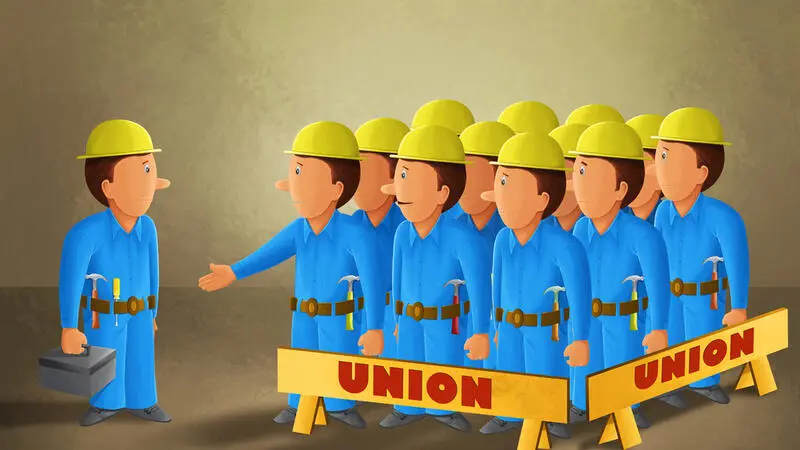Unions have been a part of the workplace for decades. They are formed to protect and advocate for the rights of employees in their places of work. Unions can be powerful allies in times of need, but they also come with certain drawbacks that should be considered before joining. In this article, we will explore the pros and cons of unionization for employees to help you make an informed decision about whether joining a union is right for you.
Table of Contents
Pros:
Better Benefits & Wages
Unionization can have a significant impact on employee benefits and wages. On the positive side, unionized workers tend to have better compensation packages overall. Union members typically earn higher wages than their non-union counterparts, and they also tend to receive more comprehensive benefits such as health insurance, retirement plans, and paid time off.
Overall, the decision to unionize comes down to weighing the advantages against the disadvantages for each worker. For those who value job security and a strong collective bargaining position over personal autonomy in negotiations with management, joining a union may be the right choice. However, for others who prioritize flexibility and independence in making career decisions, staying out of unions could be preferable.
Job Security
One of the main benefits of unionization for employees is job security. Unions work to negotiate contracts with employers that often include provisions for job protection, such as seniority-based layoffs and grievance procedures. These measures can provide a sense of stability and peace of mind for workers who are concerned about losing their jobs due to company restructuring or downsizing.
Overall, while unions can be beneficial in terms of providing job security for employees, there are also important considerations to take into account when deciding whether or not unionization is right for a particular workplace or industry.
Collective Bargaining
One of the most significant advantages of unionization for employees is collective bargaining. Collective bargaining involves negotiations between a labor union and an employer to determine the terms and conditions of employment, such as wages, benefits, and working hours. By negotiating as a group, employees can often secure better compensation and benefits than they would be able to individually.
Ultimately, whether or not unionization is beneficial for employees depends on a variety of factors specific to each workplace and industry. However, Can Law Group is available to workers seeking fair compensation and treatment from their employers?
Cons:
Costs & Fees
Unionization comes with various costs and fees. Employees who join unions are usually required to pay membership dues, which can be a percentage of their salary or a flat fee. In some cases, employees may also be required to pay initiation fees when they first join the union.
While these costs and fees may seem like an added expense for employees, they often come with benefits such as collective bargaining power, access to legal representation and in employment disputes. Additionally, unions may offer various services such as job training programs or discounted rates on insurance.If you have been injured on the job or have developed a work-related illness, you may need to hire law firms that specialize in workers’ compensation law in Palmdale, CA
However, the cost of unionization can also be considered a con for employees who do not wish to join but are still subject to collective bargaining agreements negotiated by the union. Some argue that this limits individual negotiation power and can result in lower wages or less favorable working conditions for non-unionized employees within the same company.
Restrictions on Employment Terms
One major benefit of unionization for employees is the ability to negotiate better employment terms. This can include restrictions on working hours, mandatory breaks, and overtime pay. However, it’s important to note that these restrictions may also limit an employee’s opportunities for advancement or flexibility in their work schedule.
Another restriction that may come with unionization is the requirement to pay union dues. While these fees may be necessary to fund collective bargaining efforts and ensure fair treatment for all members, they can also add up quickly and potentially impact an employee’s take-home pay.
Employee Perspectives on Unionization
From an employee perspective, the decision to unionize can be a difficult one. On the one hand, joining a union provides workers with collective bargaining power and protection against unfair practices by employers. This includes negotiating for better wages and benefits, as well as ensuring safe working conditions. Additionally, unions often provide support for employees in cases of disputes with management or disciplinary actions.
However, some employees may view unionization as a hindrance to their individual autonomy and career advancement. In some cases, unions may limit opportunities for promotion or salary increases based on seniority rather than merit. Additionally, membership fees can be costly and may not always result in tangible benefits for all members.
Conclusion
In conclusion, unionization has its advantages and disadvantages for employees. On one hand, unions can provide a voice for workers in negotiations with management, resulting in improved working conditions, wages, and benefits. Unions also offer legal representation to members facing workplace issues or disputes.
On the other hand, union dues can be costly and may not necessarily result in tangible benefits for all members. Additionally, some argue that unions can stifle innovation and productivity by creating rigid rules and regulations that make it difficult for employers to adapt to changing market demands.
Ultimately, whether or not unionization is beneficial for employees depends on individual circumstances and priorities. It is important for workers to carefully consider the potential advantages and drawbacks before deciding whether or not to join a union.

Be First to Comment